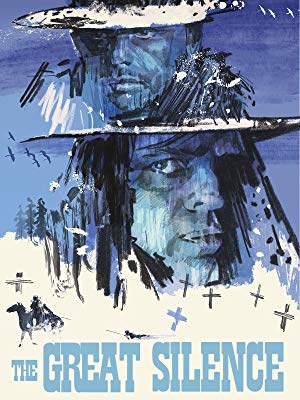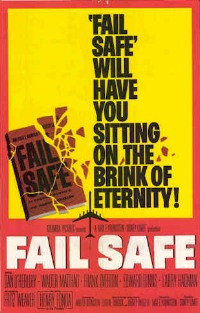 El Dorado (1967) – This Western, showcasing a 60-year-old John Wayne, a 50-year-old Robert Mitchum, and a 27-year-old James Caan (good lord, I didn’t know he was ever young! He didn’t even have a combover back then!), also brings the biggest difference between domestic Westerns and contemporary euro-Westerns to the forefront: Everyone in American Westerns always looked so freshly laundered! (Except for Mitchum, when he goes on a heartbreak-spurred bender in the second half.) One can also see it as a response to spaghetti Westerns in other ways: Wayne’s and Mitchum’s characters are the old guard, more seasoned and solid than these gunslinging teenyboppers, and even when Mitchum’s inebriated out of his gourd and Wayne’s dealing with an old bullet near his spine that randomly paralyzes his right side and gunhand, they’re still tough enough to best the your turks. (Those young turks were hired by bad guy Ed Asner, who at age 38 already looked like he was sixty.)
El Dorado (1967) – This Western, showcasing a 60-year-old John Wayne, a 50-year-old Robert Mitchum, and a 27-year-old James Caan (good lord, I didn’t know he was ever young! He didn’t even have a combover back then!), also brings the biggest difference between domestic Westerns and contemporary euro-Westerns to the forefront: Everyone in American Westerns always looked so freshly laundered! (Except for Mitchum, when he goes on a heartbreak-spurred bender in the second half.) One can also see it as a response to spaghetti Westerns in other ways: Wayne’s and Mitchum’s characters are the old guard, more seasoned and solid than these gunslinging teenyboppers, and even when Mitchum’s inebriated out of his gourd and Wayne’s dealing with an old bullet near his spine that randomly paralyzes his right side and gunhand, they’re still tough enough to best the your turks. (Those young turks were hired by bad guy Ed Asner, who at age 38 already looked like he was sixty.)
 The Great Silence (1968) – Visually it’s very different than the standard spaghetti Western in that it takes place in the winter, so everything’s snowy and people have shawls and scarfs wrapped around their heads under their hats. Story-wise, it gets some demerits by setting it in Utah (even though the area marked “Utah” on the map we see is actually Nevada (!)), then having the least Utah-like small town ever (no Mormons to be seen, and the town social life revolves around the local saloon filled with the standard floozies). Oh, and according to this script, the state governor appoints county sheriffs.
The Great Silence (1968) – Visually it’s very different than the standard spaghetti Western in that it takes place in the winter, so everything’s snowy and people have shawls and scarfs wrapped around their heads under their hats. Story-wise, it gets some demerits by setting it in Utah (even though the area marked “Utah” on the map we see is actually Nevada (!)), then having the least Utah-like small town ever (no Mormons to be seen, and the town social life revolves around the local saloon filled with the standard floozies). Oh, and according to this script, the state governor appoints county sheriffs.
Also, the hero is known simply as “Silence” because when he was young someone cut his throat to keep from identifying his parents’ murderers, which makes no sense because (a) he certainly proves able to read and write, (b) severing someone’s vocal cords without also severing their carotid artery and jugular vein is pretty near impossible, and (c) just because someone has no functioning vocal cords doesn’t mean he still can’t whisper. (That’s even more annoying than the movie trope that cutting out someone’s tongue leaves them unable to make an intelligible sound — they’ve still got lips and teeth, dude.)
On the other hand, if you want to see Klaus Kinski running around in the snow with a shawl on his head for almost two hours, plus an even downerer ending than in your average spaghetti Western, this movie is for you.
 Fail-Safe (1964) – Cut from the same cloth as the same year’s Dr. Strangelove, except with no humor at all, black or otherwise: When nuclear bombers are put on alert because of an unidentified blip that turns out to be an off-course commercial airliner, one bomber doesn’t get the signal to stand down, and continues on its mission to bomb Moscow. While the military scrambles to stop or even shoot down our own bombers to keep from starting World War III, Henry Fonda as the President tries to diffuse or at least mitigate the potential consequences with the Soviet premier… and other characters in positions of power wonder if this isn’t the perfect occasion to finally get the drop on the enemy. Fonda, Dan O’Herlihy, Walter Mathau, Frank Overton, and a very young Larry Hagman as the President’s translator, all shot in stark black and white… probably one of the best “sweating men in suits” thriller movies, although only slightly less excruciating than Schindler’s List.
Fail-Safe (1964) – Cut from the same cloth as the same year’s Dr. Strangelove, except with no humor at all, black or otherwise: When nuclear bombers are put on alert because of an unidentified blip that turns out to be an off-course commercial airliner, one bomber doesn’t get the signal to stand down, and continues on its mission to bomb Moscow. While the military scrambles to stop or even shoot down our own bombers to keep from starting World War III, Henry Fonda as the President tries to diffuse or at least mitigate the potential consequences with the Soviet premier… and other characters in positions of power wonder if this isn’t the perfect occasion to finally get the drop on the enemy. Fonda, Dan O’Herlihy, Walter Mathau, Frank Overton, and a very young Larry Hagman as the President’s translator, all shot in stark black and white… probably one of the best “sweating men in suits” thriller movies, although only slightly less excruciating than Schindler’s List.
Abandoned movies: Lair of the White Worm (1988)